Third Consultation: Mangal Anand Hospital with Dr Mangal PariharAfter taking some pictures of the outside of the clinic I walked in and was directed to the second floor. The lady at the front desk was very inquisitive and when I said I wanted to see Dr Parihar she wanted to know who my reference was, where I was staying, and to see the visitor’s card from the hotel, which I didn’t have. I showed her the room key to my hotel and just wrote down my stepfather as my reference from back in the States, figuring if they called him it would be better because he can speak Hindi anyway. She told me to have a seat and after a few minutes of waiting in the lobby I was directed to a room in the back where I saw Dr Parihar himself, the man whose Youtube videos I had been watching for a long while now. He didn’t notice me when I first walked in as he was looking at some x-rays on his computer monitor, so I sat down on the chair in front of his desk. When he turned around and said hello I got right to it with the questions. My consultation lasted around 2 hours. Here's the information that will be worthwhile to you guys.
1) I asked him if I should lengthen over my goal to ensure I get my target height in case of compression. He said that once the bone has been lengthened and locked into position then there is no real compression/shortening of the bone. He said that you have to factor in magnification when looking at x-rays.
2) I went on to ask him if I should be concerned about subsidence loss, which causes people to lose a few mm. He said it's possible but the loss is inside 3 or 4 mm. However, one could make a mistake in measuring the height gain in the first place due to x-rays not always being done in the same rotation and having a little bit of obliqueness. Basically, if the x-ray is not centered perfectly and slightly oblique you can get a different measurement by a few mm. He pointed out again that it is next to impossible to lose height and most cases of loss are likely just errors of measurement.
3) When I asked about pin loss, he said that it's almost always present but not to worry because what goes on outside is not mirrored by what is going on inside. He said that initially there is some lag because everything bends a little so the first 5 or 6 mm may not show a lot of distraction.
4) He knows that Dr Paley is an advocate of ITB release for femur lengthening, but he said that maybe 8 out of 10 times he would not find one necessary. He said that those who have the ITB release tend to have less pain while lengthening, but you have to consider whether or not it's beneficial in each case.
5) He thinks cosmetic lengthening is more difficult than lengthening for correction or discrepancy. He gave the example that patients with dwarfism have genetically more lax and stretchy tissues to start with so they don't have any trouble lengthening huge amounts. The same goes with a person with discrepancy, the shorter leg has soft tissues around it that were genetically supposed to be longer, so they're more elastic as well. With normal patients, the soft tissues are genetically supposed to be at the length they are, so they don't respond well to the lengthening.
6) Will not allow you to distract away from Mumbai.
7) If equinous is severe he would do a tendon release. As far as losing push off strength, he said it only matters if you want to be Usain Bolt or something, but it should not affect your day to day activities or your ability to do recreational sports. He said they can lengthen the tendons with what they call percutaneous techniques, where they basically slide the fibers. It leads to a certain amount of weakness but he said the data available shows it's not a significant loss in strength. He also said that the problem is that in medicine not everything is documented and not everything can be documented either. The example he gave was that if he does CLL in 10 patients and they are all from different backgrounds with different physiques, then you cannot extrapolate the results because there will be individual differences, just like how a bunch of siblings raised the same and having the same genetics may have different allergies from each other. So there are things that are reasonable and logical but not always 100% true, which is why one can argue many different ways.
8 ) He's found that in tibial lengthening most patients start having trouble by 5 cm and definitely have issues by 6 cm. If someone were willing to work extra hard then they could probably go a little more, but he has not lengthened anybody more than 6.5 cm. The 6 cm limit is not so much his doing as much as people starting to have difficulty walking and other issues developing at that point. He said someone who is extremely committed might get over that but he doesn't believe it would be a difference of more than 1 cm.
9) Is very skeptical of those who say they can lengthen large lengths like 9 cm and above with no significant problems when he sees so many have problems much earlier than that. He likes to look at what the literature (peer reviewed studies) say and as of now he hasn't seen anyone do 10 cm. He said that maybe doing that much lengthening is very important to someone but then the question is how long are you spending just trying to recover back to where you were.
10) Does not have a fixed height limit in mind but is very wary about taking on cosmetic cases as he's accepted patients before who had no clue what they were getting themselves into. He said with deformity correction the patient may experience a lot of pain with Ilizarov but they don't have much of a choice to start with because they have the deformity, and after the pain is done their major issue is solved. There could also be someone with a condition that requires constant surgery but there's still the prospect of being healed one day so they tolerate the pain and are grateful. With cosmetic patients, he can't make them understand what the pain will be like, and if they don't tolerate it well then the situation is bad, especially for international patients like myself because you have no family to fall back on. He said that around 90% of the people who inquire about cosmetic lengthening never return once they hear about the extent of surgery and recovery time, which he said is good because that means they didn't know what they were going to get into. He mentioned how Dr Paley says the persistent ones interested in CLL have height dysphoria, and said he doesn't have a black or white about who he will and will not accept, or whether CLL is a good or bad thing. He said he can do the surgery technically well but regarding whether or not he should do it for cosmetic reasons are different questions.
11) Said that one of the ways he can filter patients is through their psychologists, but unfortunately they're not always available. So he decides himself whether or not the prospective patient is a candidate, but most of the time the ones who are not have selected themselves out.
12) Said he's interested in function over length, and if he finds someone with serious equinous then he will tell the person to stop lengthening.
13) Is not one to do cosmetic lengthening in mass production because of the differences in each patient.
14) When discussing the costs of leg lengthening, he said part of the reason it's so expensive in the West is because they dispose things that can be used again after being sterilized, such as drill bits and fixators. Part of the reason he can charge less is because they can recycle a lot of the materials used in the fixators.
15) Interestingly, he said that the medical counsel in India finds doctor advertisements unethical so you won't find billboards or anything advertising specific doctors in India. Kind of reminded me of Dr Mahboubian's billboard in LA.
16) I told him that in my consultation with Dr Dhawan he made it seem like there are very few people I could go to for CLL with peace of mind that I'm getting it done safely. I asked why that is when I see that there are plenty of orthopedic surgeons world over. Dr Parihar responded that even though there are plenty of surgeons out there who can treat deformities, CLL is something that needs to be done by those at the top of the pyramid because you need someone who has the experience to fix any complications which can occur.
17) Does not perform LATN and hasn't met anyone who prefers it over LON. He doesn't like LATN because you have to fixate the wires in such a way that the nail can be put inside later, and if you don't do it properly then you may have to remove a wire, which runs the risk of subsidence. He doesn't think there is a demonstrated benefit with LATN over LON so you're going through extra trouble for nothing.
18 ) With LON he'll put in the largest diameter nail that he can under the circumstances, but the nail will always be of a smaller diameter in cosmetic lengthening than lengthening for trauma, because reaming is something that is injurious and he'd want to preserve the patient's biology as much as possible.
19) Won't do plate fixation after lengthening for a few reasons. Plate fixation is not as stable as LON, and it has also not been done frequently enough in cosmetic patients to justify its use. For him it would not be something he'd be willing to risk.
20) He's the one who teaches others how to use the hexapod fixation device. He said the hexapod is used only once you finish lengthening and take a full length x-ray, and if you find there's same malalaignment you can use the hexapod to adjust it. So the lengthening is done with the standard Ilizarov and the struts get put on later to turn it into a hexapod to make the adjustment.
21) Told him that I'm concerned about the higher rate of re-fracture with external fixation. He said that statistic is because people take the frame off earlier than it should have been taken off. He said their golden rule is "a month too late is better than a day too early." He avoids the risk of re-fracture due to his experience and ability to resist patient pressure to remove the fixator early.
22) Says one month per cm lengthened is the absolute minimum you would need to wear the fixator, but normally it comes to 1 and a half months. So for 6 cm lengthening you would need to wear the externals for 8 months or longer.
23) With his patients apparently nobody has complained of knee pain after LON as of yet, but in terms of healing for cosmetic cases he recommends going with external fixation over LON.
24) Would lengthen at .75 mm per day starting 7 days of rest after surgery because tissues have to get used to distraction. 1 mm per day is just the outer limit of how fast you can distract tibias.
25) He has used monorail fixators for lengthening before, but said the disadvantage of using it over the Ilizarov fixators is that there is nothing to hold the foot. With Ilizarov fixators, if you develop trouble in terms of equinous you can use rings to get the foot straight by gradual stretching. With monorails you have nothing to hold the foot. Although monorails superficially look easier, he finds them more complicated than Ilizarov because you have to be absolutely perfect with it, or you can run into other complications.
26) Also on the subject of monorails, he said that as a general rule, bulkier patients almost always have a tendency to develop valgus with monorails. The monorails are pulling only from one side and the monorail doesn't get much of a hold on the soft tissues on the other side, especially with bulkier patients, whereas with ring fixators you've got a hold on both sides. So for someone of my width, in order for me to walk around well he'd choose to use the ring fixators.
27) Is not convinced either way whether bulk is good or bad, but says for sure that while lengthening you need to concentrate a lot on stretching. He said he's even more convinced on the importance of stretching because they've had fracture patients who developed foot drop and after three or four years over time with stretching of the foot they've straightened out without the requirement of surgery. So he's convinced if you stretch well then your lengthening will be much easier.
28) Said there's no sense in using the ISKD and subjecting himself and the patient to stress even if it is available. He would use the Precice if internals were chosen because it has a good reputation and is controllable. The only issue is the cost because they charge the same for him to use it as they charge surgeons anywhere else. Doesn't think there's much of a learning curve because putting the nail inside in itself is not a big deal and pretty standard.
29) Apparently, right now the use of Precice in India is on a per patient basis and there are special permissions required for Precice to be used. The whole set comes from UK to India.
30) Worst case scenario, if I were to have problems with healing in the external fixator, then the option to put a nail inside can be done at a later date, even in the US if I were to have to do it.
31) Corrections to the bone can be done all throughout lengthening, even toward the end of distraction.
32) Procurvatum (forward bend), valgus (x-legs), and other malalignment should not happen if your fixator is stable enough.
33) The fixator he uses would have a combination of wires and pins. As long as you have the fixator on you would have to clean the pins each day, so you'll be changing a lot of dressings and doing a lot of cleaning in those months
 34)
34) There is a small risk of pinsite infection with externals, and if it happens then I would just take antibiotics. It would be next to impossible to get a deep bone infection with externals.
35) Would follow up on you once every two weeks while lengthening.
36) Can give you pain meds during lengthening to help with pain.
37) Is not a believer in weight bearing during distraction. Said there is no problem with weight bearing especially when doing external only, but because you are distracting in a goal to get taller, and when you stand you are compressing it, he finds it paradoxical. He allows weight bearing to the extent that you keep your feet neutral, basically standing. Once lengthening is over, then you should be walking as the more you walk the sooner the bone heals during the consolidation phase.
38) Showed him the snippet about fibula fixation that Dr Paley wrote about and told him how my first consultation determined that there would be no fibula fixation. He said that fibula fixation is very important and began to show me x-rays of how he did fibula fixation. As expected, it mirrored Dr Paley's method by having the fibula fixed at an angle both proximally and distally.
39) Talked a little bit about his fellowship with Dr Paley and said that Dr Paley has a maximum of 5 fellows located in India, one of which is him. Dr Shah and Dr Chaudhary are others.
40) He has never performed limb shortening and would not do it for someone.
41) Told him how there's a split in idea between the safety of humerus lengthening, Dr Paley saying it's the safest to lengthen in the body and Dr Guichet saying it's too dangerous because you can damage nerves and higher risk of paralysis. Dr Parihar shared Dr Paley's thought and said it's the easiest lengthening to do. He said there are ways to avoid nerve damage and that he has performed humerus lengthening before, so he'll do it. However, he thinks that as long as your hands can reach the pockets of your trousers then there should be no need for humerus lengthening.
42) Externals and LON don't have a noticeable difference in price. They'll both be around 900,000 INR for the surgery.
After the consultation was over I paid the receptionist the 2,000 INR fee for the consultation. When I got back from Dr Parihar’s clinic I just lounged in my hotel room and ordered room service. This time I ordered a chicken tikka submarine, pavlova (New Zealond Meringue baked dessert topped with whipped cream and cuts of green apple), and a drink called Black Cat, which is crushed black current, lime juice, salt and 7UP. Yet again the room service didn’t come up to take my plate after I called them, even though they told me to do so.
Photos of Clinic 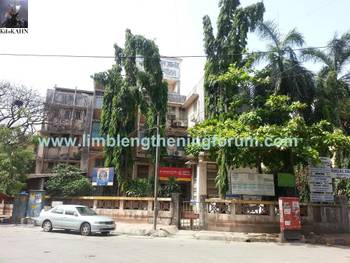
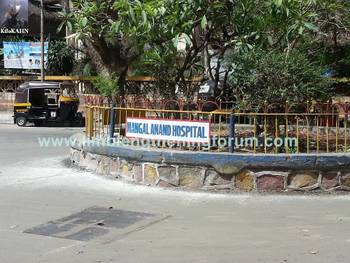
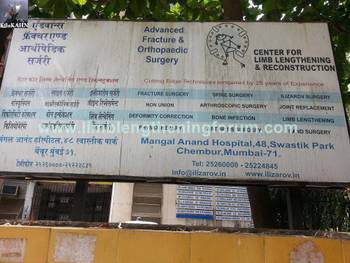
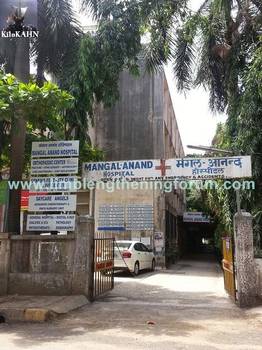
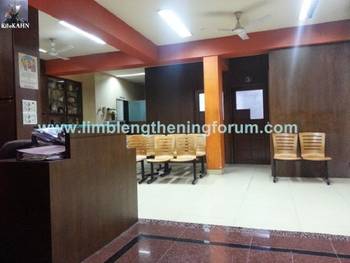

 Author
Topic: No More Mal-Kahn-Tent - External Tibias - Dr Parihar (Read 445819 times)
Author
Topic: No More Mal-Kahn-Tent - External Tibias - Dr Parihar (Read 445819 times)
